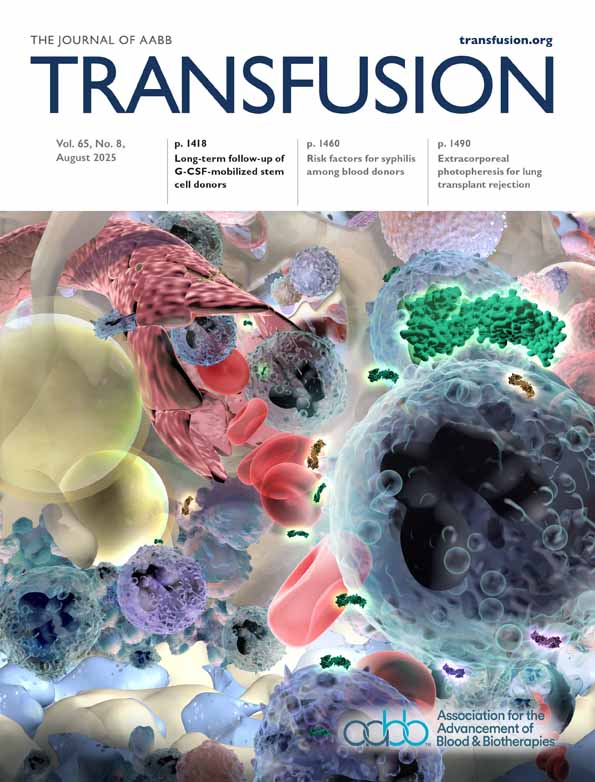Kinetics of peripheral blood stem cell harvests during a single apheresis
Supported by grant no. 625/97 from the Örebro Research Committee.
Abstract
BACKGROUND: The enumeration of CD34+ cells in the peripheral blood of patients before leukapheresis is commonly used to predict the outcome of stem cell harvests. The concept that an increased number of transplanted cells gives faster marrow reconstitution triggers an interest in investigating the kinetics of peripheral blood stem cells during leukapheresis. The aim of this study was to investigate the issue of recruitment of hematopoietic progenitor cells during a single leukapheresis.
STUDY DESIGN AND METHODS: Nine leukapheresis procedures (in 8 patients) were investigated. In each case, 3 blood volumes were processed. Samples from peripheral blood, the collection line of apheresis equipment, and the collected component were obtained after each blood volume was processed. The enumeration of CD34+ cells was performed, and the total number of progenitors, as a sum of the number of cells in the peripheral blood and the number of cells in the collected component, was calculated.
RESULTS: A mean of 13.3 L of blood was processed, and a component with a mean volume of 424 mL and a mean of 10.1 × 108 CD34+ cells per kg of body weight was collected. White cell and mononuclear cell counts in peripheral blood declined concomitantly during the procedures. The calculated total number of cells—that is, the sum of the number of cells in the collected component and the number of cells in the peripheral blood—showed a concomitant, but not equal, rise in polymorphonuclear cells, mononuclear cells, and CD34+ cells during the leukapheresis. This apparent mobilization of progenitors into the peripheral blood did not correlate with the slightly increased number of polymorphonuclear cells or with the more pronounced increase in mononuclear cells.
CONCLUSION: There is a substantial recruitment of progenitor cells during a single leukapheresis.




